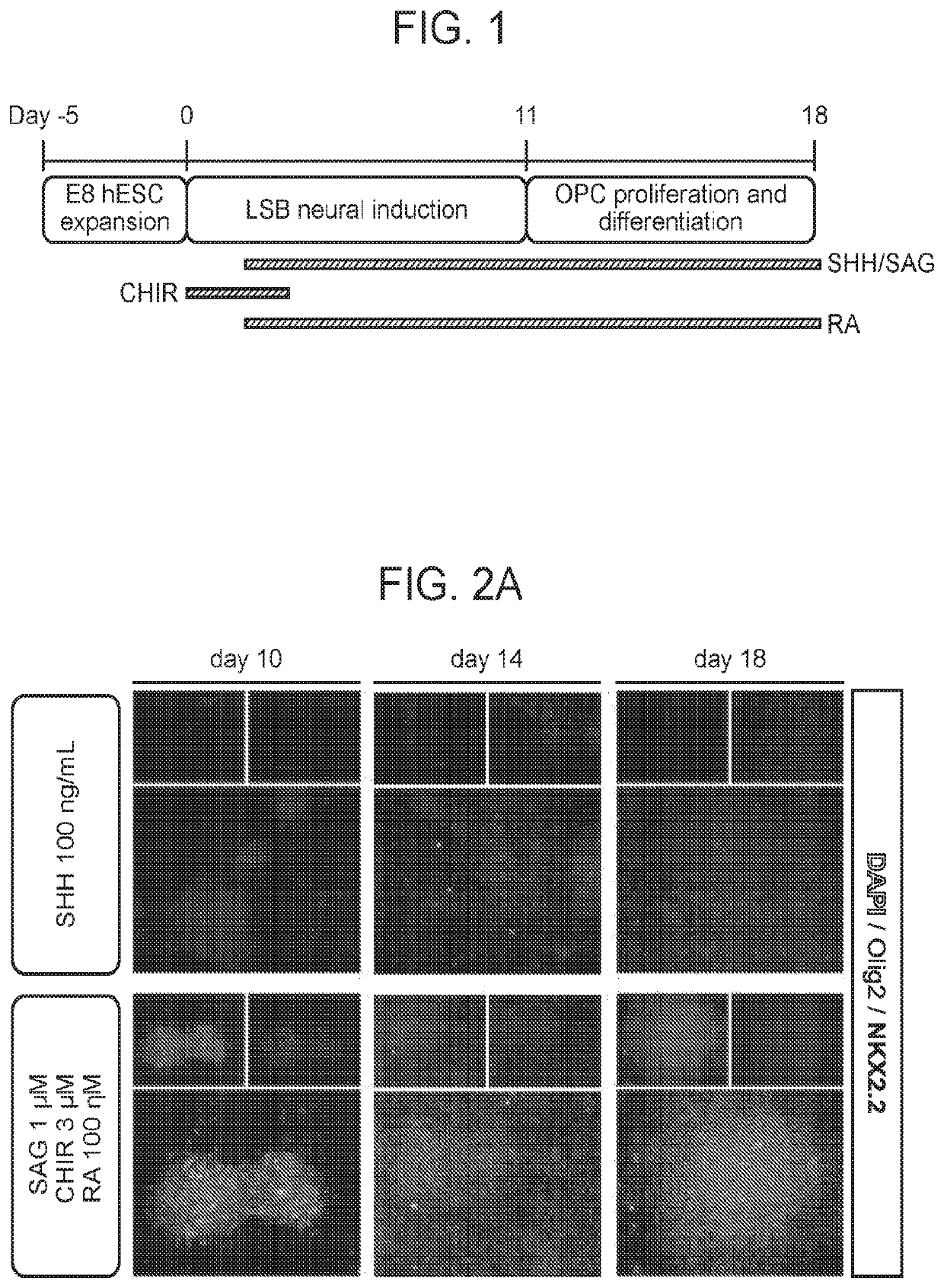Compositions and methods for generating oligodendrocyte precursors
a technology of oligodendrocyte precursors and compositions, which is applied in the field of compositions and methods for generating oligodendrocyte precursors, can solve the problems of severe implications affecting neurological function, difficult to otherwise obtain a scalable and safe supply of such cells, etc., and achieve the effect of accelerating the differentiation process and inducing the differentiation of oligodendrocyte precursors
- Summary
- Abstract
- Description
- Claims
- Application Information
AI Technical Summary
Benefits of technology
Problems solved by technology
Method used
Image
Examples
example 1
[0242]The PNIPAAm-PEG three-dimensional culture system described in the present disclosure is designed for production of cells for disease modelling, drug screening, and cell transplantation studies and therapies. FIG. 1 depicts a schematic of the differentiation protocol for pre-OPC patterning from PSCs. This differentiation protocol employs a three-dimensional culture system comprising a PNIPAAm-PEG-based biocompatible thermoresponsive polymer, an Shh signaling pathway agonist, a Wnt signaling pathway agonist and retinoic acid. As depicted, the timing of the addition and removal of different factors is important.
[0243]In FIG. 2A-2B, hPSC-derived cells express the definitive OPC markers Olig2 and NKX2.2 after differentiation. The system can also be used for the differentiation of pre-OPCs into OPCs and for the maturation of oligodendrocytes in a large-scale manner. FIG. 2 depicts a time-course analysis of Olig2 and NKX2.2 expression using different conditions for pre-OPC differenti...
example 2
[0244]Oligodendrocyte precursor cells (OPCs) can be used for the treatment of demyelinating diseases and conditions of the central nervous system. However, acquiring sufficient numbers of high-quality OPCs has been a challenge. Here, it has been shown that OPCs can be generated from human pluripotent stem cells (hPSCs) in a three-dimensional (3D), scalable, fully-defined thermoresponsive biomaterial system. CRISPR-Cas9 was used to create an NKX2.2-EGFP (NKX2.2 enhanced green fluorescent protein) human embryonic stem cell reporter line that enabled fine-tuning of early OPC specification and the identification of conditions that markedly increased the number of OLIG2+ and NKX2.2+ cells generated from hPSCs. Transplantation of these biomaterial-generated 50-day-old OPCs, without purification, into the brains of NOD / SCID mice led to cell engraftment, migration, and maturation into myelinating oligodendrocytes in vivo. These results demonstrate the use of 3D platforms for rapid and large...
PUM
| Property | Measurement | Unit |
|---|---|---|
| MW | aaaaa | aaaaa |
| MW | aaaaa | aaaaa |
| time | aaaaa | aaaaa |
Abstract
Description
Claims
Application Information
 Login to View More
Login to View More - R&D
- Intellectual Property
- Life Sciences
- Materials
- Tech Scout
- Unparalleled Data Quality
- Higher Quality Content
- 60% Fewer Hallucinations
Browse by: Latest US Patents, China's latest patents, Technical Efficacy Thesaurus, Application Domain, Technology Topic, Popular Technical Reports.
© 2025 PatSnap. All rights reserved.Legal|Privacy policy|Modern Slavery Act Transparency Statement|Sitemap|About US| Contact US: help@patsnap.com



